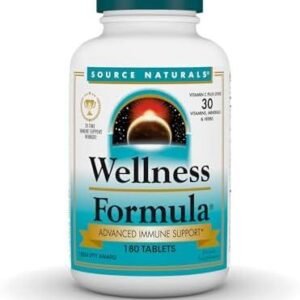In today’s fast-paced world, where convenience often trumps health, staying physically active can feel more like a chore than a priority. Yet, as we navigate through our daily routines—whether it’s lifting groceries, playing with our children, or simply getting up from a chair—our bodies are constantly engaged in a variety of movements that require strength, balance, and flexibility. This is where functional fitness steps in, offering a holistic approach that transcends traditional workout regimens.
Functional fitness focuses on exercises that mimic real-life movements, enhancing our body’s ability to perform daily tasks with greater ease and efficiency. It’s not just about building muscles; it’s about building a resilient body that can support us in our everyday lives. In this article, we will explore the myriad benefits of incorporating functional fitness into your routine, from improved strength and mobility to enhanced overall well-being. Whether you’re a seasoned athlete or just starting your fitness journey, understanding the principles of functional fitness can unlock a new level of vitality and ease in your daily life. Let’s dive in and discover how you can transform your approach to movement for a healthier, more active lifestyle.
Table of Contents
- Understanding Functional Fitness and Its Core Principles
- Integrating Functional Movements into Your Daily Routine
- Enhancing Mobility and Strength for Improved Performance
- Preventing Injuries Through Smart Functional Training Techniques
- The Way Forward
Understanding Functional Fitness and Its Core Principles
Functional fitness focuses on training the body for the activities performed in daily life, emphasizing strength, endurance, balance, and coordination. Unlike traditional workout routines that isolate muscle groups, this approach incorporates movements that mimic real-world tasks, thereby enhancing overall physical capability. The core principles include:
- Movement Patterns: Emphasizes compound movements such as squats, deadlifts, pushes, pulls, and rotational exercises.
- Core Stability: Strengthening the core, which plays a crucial role in nearly all movements.
- Joint Mobility: Enhancing flexibility and range of motion to improve performance and reduce the risk of injury.
Incorporating these foundational elements helps individuals adapt to the physical demands of everyday activities, such as lifting, bending, and reaching. By integrating functional fitness into one’s routine, individuals can achieve improved posture, greater balance, and increased stamina. This holistic approach not only fosters physical improvements but also contributes positively to mental well-being, offering a sense of accomplishment and reinforcing a proactive mindset. Here’s a brief comparison of traditional fitness versus functional fitness:
| Traditional Fitness | Functional Fitness |
|---|---|
| Focus on isolated muscle groups | Focus on multi-joint movements |
| Limited everyday application | Direct application to daily activities |
| Machines often used | Bodyweight exercises and free weights |
Integrating Functional Movements into Your Daily Routine
Incorporating functional movements into your daily routine can significantly enhance your overall well-being and performance in everyday tasks. Consider these effective strategies to seamlessly integrate these movements:
- Opt for the Stairs: Whenever possible, choose stairs over elevators. This simple change not only engages your leg muscles but also improves cardiovascular health.
- Carry Groceries with Intention: Instead of using a cart, try carrying your groceries. This helps with grip strength and mimics real-life lifting scenarios.
- Balance on One Leg: While brushing your teeth or waiting for your coffee, practice balancing on one leg. This enhances stability, which is crucial for daily activities.
To maximize the benefits of these functional movements, consider breaking your day into intervals where you focus on specific functions of strength and flexibility. The following table illustrates how you can utilize common actions for a functional fitness boost:
| Activity | Functional Movement | Benefits |
|---|---|---|
| Picking up objects | Deadlift stance | Strengthens back and legs |
| Standing up from a chair | Squat motion | Increases leg and core strength |
| Reaching for highest shelves | Overhead press | Improves shoulder stability |
Enhancing Mobility and Strength for Improved Performance
Improving mobility and strength is essential for anyone looking to enhance their physical performance in daily life. Functional fitness incorporates movements that mimic real-world activities, enabling individuals to perform everyday tasks with greater ease and efficiency. This type of training challenges the body to work in unison, improving core stability and promoting balance. Engaging in exercises such as squats, lunges, and push-ups not only increases strength but also enhances flexibility and range of motion. As these foundational movements become more comfortable, individuals will notice significant improvements in their overall physicality.
To optimize your functional fitness regimen, consider incorporating the following elements:
- Multi-Joint Exercises: Focus on compound movements that engage multiple muscle groups.
- Dynamic Stretching: Implement warm-up routines that enhance flexibility and mobility.
- Progressive Resistance: Gradually increase weights and intensity to continuously challenge your body.
- Core-Focused Workouts: Strengthening the core is essential for stabilizing the body during all activities.
The table below outlines key exercises to incorporate into your routine, showcasing their primary benefits:
| Exercise | Benefit |
|---|---|
| Deadlift | Builds overall strength and stability |
| Plank | Enhances core strength and endurance |
| Overhead Press | Improves shoulder strength and mobility |
| Step-Ups | Enhances leg strength and balance |
Preventing Injuries Through Smart Functional Training Techniques
Integrating smart functional training techniques into your fitness routine can significantly reduce the risk of injuries. Functional training emphasizes movements that replicate everyday tasks, and by doing so, it strengthens not only specific muscle groups but also stabilizing muscles that are often neglected in traditional workouts. By consistently practicing these movements, you enhance your body’s coordination, balance, and flexibility, which are essential for performing daily activities safely. Key techniques include:
- Dynamic Stretching: Prepares muscles for activity
- Core Stabilization Exercises: Improves control and strength
- Balance Training: Reduces the risk of falls
- Multi-Directional Movements: Enhances functional mobility
Moreover, maintaining proper form and technique during functional exercises is crucial for injury prevention. Utilizing tools such as resistance bands, stability balls, and kettlebells can add variety and challenge to your routine while ensuring that the form remains a priority. Below is a simple guideline to help you focus on safe training:
| Exercise | Key Focus Points |
|---|---|
| Squats | Keep knees aligned with toes |
| Lunges | Maintain a straight back |
| Planks | Engage the core throughout |
| Deadlifts | Hinge at the hips, keeping the back straight |
The Way Forward
Conclusion: Embracing Functional Fitness for a Vibrant Life
As we navigate the demands of everyday life, the benefits of functional fitness become increasingly clear. This holistic approach to exercise not only enhances our physical capabilities but also cultivates resilience and adaptability in the face of life’s challenges. By incorporating functional movements into our routines, we are essentially investing in our overall well-being, ensuring that we can climb stairs, lift grocery bags, or even chase after our children with ease and vitality.
Remember, the journey to functional fitness is a personal one. Start small, listen to your body, and choose activities that resonate with you. Whether it’s through structured workouts, engaging sports, or simply integrating movement into your day-to-day tasks, every step you take towards incorporating functional fitness will pay dividends in your quality of life.
So, as you embark on this rewarding path, keep in mind that the goal isn’t just to enhance your physical strength; it’s about fostering a sense of confidence and freedom in everything you do. Together, let’s unlock the potential within ourselves and embrace the vibrant, active lives we deserve. Thank you for joining us on this exploration of functional fitness. Here’s to a stronger, healthier you!




